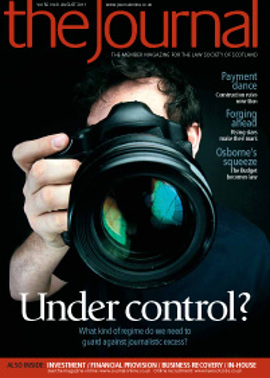Give it a push start

It’s only human nature that the majority of actions taken by firms, in response to the economic downturn, have involved inward-facing adjustments to business models. When we see outside conditions that are tough, the obvious initial action is to look inside to reduce costs and adjust processes, because these are areas where quick and effective change can be implemented.
But as we move towards the end of this longer-than-normal downturn, where most such efficiency changes have been fully implemented, there is now a general need to change direction and look outwards, with a view to improving the top line.
Changing direction in this way can, however, be difficult for some businesses, especially given the severity of this recession, because sometimes a mindset has been developed that focuses only on cost savings and efficiencies, having almost given up on the concept of generating more income. This can be a problem, because a sustained economic recovery will certainly emerge (the likely start point and strength of it can be debated at length), and failure to position the business for this can mean missed opportunities as well as increased risks, during the upturn phase.
So, a firm’s strategy for recovery needs first to get beyond the dizzying impact of the multiple sector changes that have occurred over the past few years. Yes, supply of legal services is still in excess of demand, property transactions are a fraction of their peak level, the need to streamline process-driven work continues, banks are not yet functioning normally, and the uncertainty remains of how ABS structures might change the game again. However, despite these ongoing worries, a greater clarity of thinking is now required, to participate in (and indeed influence) the evolving recovery phase. By simply reacting to an upswing, when it is clearly seen to be in course, a firm will fall well behind its competitors who have chosen to be at its vanguard.
Matchmaking for lawyers
It’s impossible to generalise on the best course of action for all firms at this stage in the cycle, different as they are in terms of size, skill-set and markets, but there are a few business drivers that should be considered by most, within their strategic review process.
Taking a far more active role in deal-making is one of these. The firm that puts together two clients, or contacts, with the germ of a deal or business opportunity, is clearly involved in the transaction from the start, and business protocol usually means that they are far more likely to be engaged as legal counsel and less likely simply to be asked later on to take part in a bid process with competitors. It’s possible that conflicts of interest may need to be covered off, and there might be a decision to make on whom to work for in the deal (if the two parties are both clients), but this can usually be managed and the key aspect is that being in at the heart of the deal, right at the start, is a strong position for future involvement.
A bit of creative thinking might be required to propose a deal, but firms who go out of their way to fully understand their clients’ businesses, their USPs (unique selling points) and their current and future strategies, should quickly be able to identify the kind of opportunities where business may result. Ideally the prospective deal will also leverage the firm’s key skills and USPs, so everyone benefits. During a sustained recovery phase, many more opportunities will arise for fast movers, and so getting into the mindset now will help to drive these.
Firms need to ask themselves, who are our contacts with entrepreneurial flair, decent funding and a positive strategy for growth that will do well within the recovery phase? Who do they need to meet, to create their kind of business deals, and who do we know that could fit the bill? Finally, what sort of deals would be a good strategic and cultural fit for all three parties? Undertaking this type of outward-looking exercise can often lead to a win-win-win scenario for all participants, which will strengthen relationships going forward.
Don’t get caught
There are, however, some risks as well as opportunities within a recovery phase, and it is vitally important for firms to position themselves for these, including in particular the potential impact on working capital. “Looking out”, to understand the position of the firm’s bankers, will therefore be important too. Money out tends to happen well ahead of money in at such times in the recovery, and if you’re not careful, the joy of new business coming in the door can mean an eye being taken off the cashflow ball and a subsequent call from the bank, worried about an unexpectedly high overdraft. The worst possible mistake would be to fail to position for this and end up having huge financial pressures at the very time when things are actually beginning to look up. Accurate forecasting and regular communication with still-cautious banks are therefore vital at this time, as is the need to continually refresh this information during what will be a period of constant change.
This is all very well, I hear you say, but when will we actually be in a sustainable recovery phase? Mervyn King at the Bank of England recently went all biblical and suggested that after seven fat years, we are now halfway through seven lean years. Oh well, three and a half to go then? I certainly don’t buy that gloomy general prediction, and of greater importance is the fact that different business sectors have different cycles. Some industries are probably in decent recovery already, and others (renewables?) are of such high growth that they act in a way that is impervious to the broader cycle. Equally, some sectors may be going through an adverse paradigm shift that changes all the previous cycle rules completely (residential property, anyone?) so it’s important to identify which areas require more focus.
We can certainly all have our guesses at the When?, Where? and How strong? questions on a sustained recovery, but one thing is for sure. Early birds getting worms, visionaries seeing the future, fast adaptors gaining an edge – however we categorise these business types, they all tend to do better than the rest, when things pick up, and the capitalist system will always reward them, to the detriment of the less outward-looking participants.
In this issue
- Take five
- Shared concerns
- Fairness in repossession
- The price of freedom
- Next month: your new look Journal
- A tale of two cities
- Ready money
- The longest arm of the law
- Return to normality?
- Ghost of decree past
- Shaping the world order
- Bright lights
- "One Profession" comes together
- From the Brussels office
- Ask Ash
- Give it a push start
- Up to the job?
- Spotlight on fairness
- Human rights abroad
- Heightened AWaReness
- Recipe for fudge
- My late father
- Getting closure
- Website review
- Book reviews
- Clearer view
- Rules of engagement






